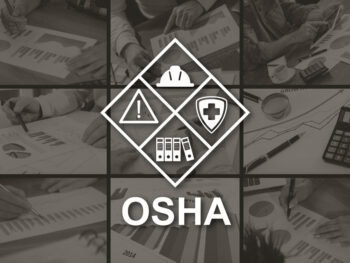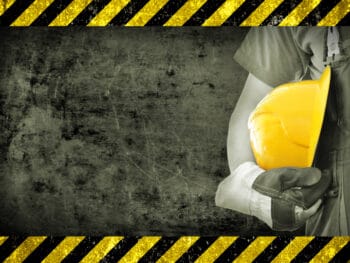OSHA is the federal Occupational Safety and Health Administration, which was created under the Occupational Safety and Health (OSH) Act of 1970. Congress created OSHA to assure safe and healthful working conditions by setting and enforcing standards and by providing training, outreach, education and assistance. OSHA is part of the United States Department of Labor. Since the creation of OSHA, the number and severity of workers’ compensation injuries has been on a slow but steady decline.
What is OSHA’s focus?
OSHA’s focus is to reduce occupational injuries, occupational illnesses, and loss of life. This has resulted in 40 years of improvements in employers’ safety programs.
What employers are covered by OSHA?
OSHA covers all private sector workers in the United States, the District of Columbia and other U.S. jurisdictions. The OSH Act covers employers and their employees either directly through the federal OSHA or through an OSHA-approved state program. State programs must meet or exceed federal OSHA standards for workplace safety and health. Exceptions are the self- employed and family members of farm employers who do not employ non-family members.
What does OSHA require?
OSHA requires employers to provide their employees with working conditions that are free of known dangers or that reduce dangers to the maximum extent possible. OSHA sets and enforces workplace safety and health standards while providing assistance and training to employers and workers.
OSHA requires record keeping for work-related injuries and illnesses. Most private employers with 10 or more employees are required by OSHA to keep a log of work-related injuries and illness on their Form 300.
A Form 300 has to be completed for each separate physical location where there are employees for at least one year. The physical location also includes employees who are assigned to a location but who are routinely located elsewhere such as truck drivers or traveling sales people. Physical locations also include other locations where materials or equipment are stored for support of the primary location.
OSHA’s protection of workers is very broad. There are OSHA standards for many things, such as:
- Exposure to harmful substances like asbestos
- Limits on the amount of hazardous chemicals to which a worker can be exposed
- Indoor air quality
- Blood-borne pathogens
- Air contaminants
- Personal protective equipment
- Sanitation
- Respiratory protection
- Confined spaces
- Machine guards
- Training for dangerous jobs
- Provide protection against falls
- Preventing trench cave-ins
- Preventing infectious diseases
- Guarding floor and wall openings
- Communication about hazards
- Industrial trucks
These are just a few of the many safety standards OSHA has created and requires of employers. If there is not a specific standard set for a hazardous condition, the OSH Act also has a General Duty Clause requiring employers to keep their workplace free of hazardous conditions.
What else does OSHA require of employers?
The employer is responsible for finding and correcting safety and health hazards. The employer is also required to:
- Keep accurate records of work related illnesses and injuries
- Inform employees about hazards through training, safety programs, alarms, labels, color coded systems, hazard information sheets, etc.
- Post OSHA citations, injury and illness data, and the OSHA poster in areas where employees will see them
- Provide hearing tests or other medical tests required by OSHA
- Perform tests on the workplace such as air sampling
- Notify OSHA within 8 hours of all work related deaths or of any accident where three of more employees go to a hospital
- To not retaliate or discriminate against an employee for filing an OSHA complaint
What powers does OSHA have?
OSHA can make an unannounced inspection on an employer. The OSHA Act gives workers the right to file a complaint and request OSHA inspections when they believe there is a hazardous condition in their workplace. A worker can tell OSHA not to tell the employer who filed the request for the inspection or the complaint. The intent of the anonymous complaint procedure is to protect the employee from retaliation from the employer, but employers feel that it has led to a lot of abuse by disgruntled workers and labor unions trying to force their negotiation positions on the employers.
When there is a legitimate complaint, an OSHA inspector can issue citations and fines. The citation includes the methods an employer must use to correct the situation and the date by which the corrections must be made. The employer may challenge whether there is a violation of safety standards or any other part of the citation. Employees only have the right to challenge the date the corrections must be made.
How can OSHA help cut costs?
The employer who complies with all OSHA safety standards has little reason to be concerned. If the employer has questions about whether they are in compliance with OSHA standards, they can request OSHA to provide safety guidelines and assistance.
OSHA offers a many training courses and educational programs to recognize, avoid, and prevent workplace safety and health hazards. OSHA also offers training and educational materials that help businesses train their workers and comply with the OSH Act.http://www.osha.gov/dte/index.html
Using OSHA to improve safety program is a great way to reduce cost for workers’ compensation. We can also help you with your safety program through the use of our safety manual. We will be glad to assist you in your efforts to create a safer workplace.
Author Michael B. Stack, CPA, Director of Operations, Amaxx Risk Solutions, Inc. is an expert in employer communication systems and part of the Amaxx team helping companies reduce their workers compensation costs by 20% to 50%. He is a writer, speaker, and website publisher. www.reduceyourworkerscomp.com. Contact: mstack@reduceyourworkerscomp.com.
©2013 Amaxx Risk Solutions, Inc. All rights reserved under International Copyright Law.















